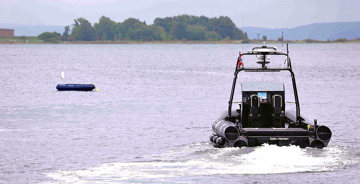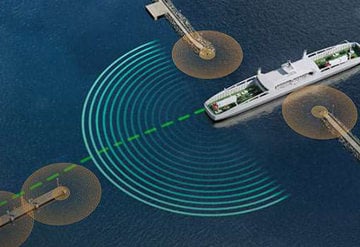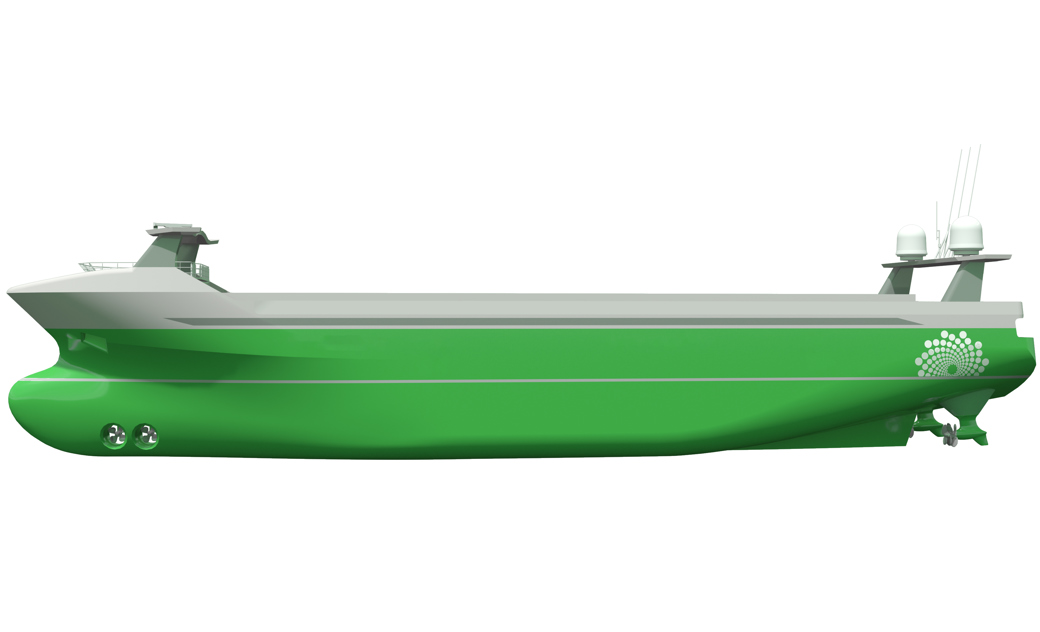
Autonomy is here – powered by KONGSBERG
History has shown that disruptive technologies tend to follow an exponential growth path. Take the Global Positioning System (GPS) and the Internet as examples. While both are today all around us, their adoption was initially slow. It was only when a critical mass was reached that GPS and the Internet entered the mainstream consciousness. But once there, growth accelerated and today it's hard to imagine a time without them. It is highly likely that we will feel the same about electric, autonomous cars at some point in the future. And further still, there will be a time when we look back in wonder at the human effort and interaction needed to keep a ship on course.
40 years in development
Today we see accelerating use of autonomy in a wide range of applications and industries. In the maritime world autonomy has been with us for over 40 years, starting with the development of Dynamic Positioning (DP) systems capable of keeping a ship on station without human intervention. This technology was embraced by the high stakes offshore vessel industry, where docking and working alongside rigs and over wellheads is an extremely hazardous occupation. KONGSBERG was the first to develop a working DP system and has been the pioneer ever since.
The first autonomous vehicles
Another area of autonomy that KONGSBERG has spearheaded is Autonomous Underwater Vehicles (AUV). Development started at the Norwegian Defence Research Establishment (FFI) in 1993. This catalysed a collaboration between FFI, KONGSBERG and Statoil, developing the HUGIN AUV for detailed seabed mapping for deep water oil and gas, leading to a first commercial AUV route survey in 1997. It was around this time that developments in autonomy, inertial navigation and synthetic aperture sonar for the Norwegian Navy started and since 2004 they have operated HUGINs for mine counter measures, while the offshore industry surveyed almost one million line kilometres using KONGSBERG AUVs.

Integration as an enabler
These autonomous developments have brought us closer to a maritime autonomy 'critical mass'. And while KONGSBERG has been instrumental in bringing the industry to this point, it is now at the forefront of driving autonomous ships into the mainstream shipping world. A key first step was the introduction of KONGSBERG's integration strategy in 2016. Before high-end 'autonomy ready' technologies existed mostly in isolation. Through integration, diverse sub-systems can co-exist on the same network, making way for new uses and applications, and ultimately, creating a more cohesive platform for autonomous ship. With integration, we are building new platforms that combine control and monitoring systems with machine learning, AI and military-grade guidance systems, in addition to diverse sensors such as radar, sonar, cameras and laser mapping.
Building an autonomy test bed
In the autumn of 2016, KONGSBERG became a key stakeholder and development partner of the world's first official test bed for autonomous shipping; an extensive area of the Trondheimsfjord in Northern Norway designated by the Norwegian Coastal Authority (NCA) for trialling autonomous ships and the sensors, software and systems that will make them a reality. The initiative was established by the Norwegian Marine Technology Research Institute (MARINTEK), the Norwegian University of Science and Technology (NTNU), the Trondheim Port Authority, KONGSBERG and Maritime Robotics. Other stakeholders include the Ocean Space Centre, and NTNU's Center for Autonomous Operations and Services (AMOS).
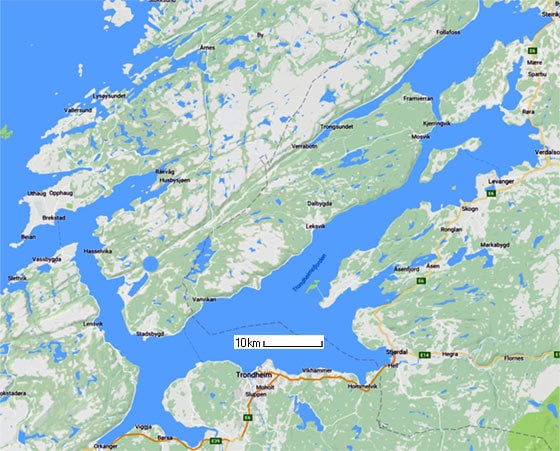
Unmanned and fully automated
Soon after the opening of the test bed, we took autonomy to the next level, by announcing our partnership with Autonomous Ships Ltd to develop and build the world's first unmanned and fully-automated vessel for offshore operations. Hrönn is a light-duty, offshore utility ship servicing the offshore energy, scientific / hydrographic and offshore fish-farming industries. It will initially operate and function primarily as a remotely piloted ship, in Man-in-the-Loop Control mode, but will transition to fully automated, and ultimately autonomous operations as the control algorithms are developed concurrently during remotely piloted operations. KONGSBERG is supplying and integrating all vessel control systems including K-Pos dynamic positioning, K-Chief automation and K-Bridge ECDIS. These will be replicated at an Onshore Control Centre, allowing full remote operations of the Hrönn.
Electric, autonomous, zero emissions
Not content in leading the way for offshore vessels, we have also taken a pioneering approach in the short sea segment through a partnership with YARA to build the world's first fully electric and autonomous container ship, with zero emissions. YARA Birkeland will initially operate as a manned vessel, moving to remote operation in 2019 and expected to be capable of performing fully autonomous operations from 2020. This new zero-emission vessel will be a game-changer for global maritime transport contributing to meet the UN sustainability goals. YARA's new vessel will reduce NOx and CO2 emissions and improve road safety by removing up to 40,000 truck journeys between YARA's Porsgrunn production plant to Brevik and Larvik in Norway. KONGSBERG is responsible for development and delivery of all key enabling technologies on YARA Birkeland including the sensors and integration required for remote and autonomous operations, in addition to the electric drive, battery and propulsion control systems.
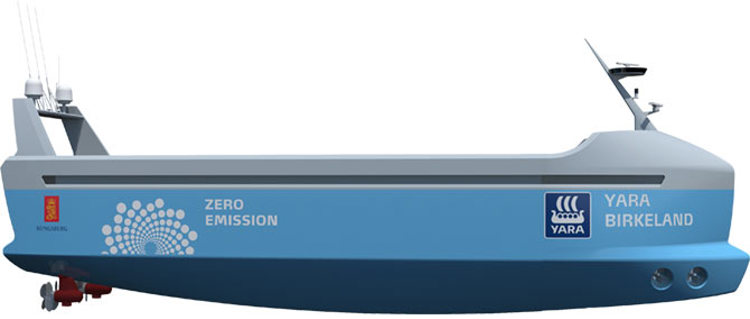
Autonomy through digitalisation
Our focus on autonomy is not only related to the hardware and software systems of advanced on board technology. We are also a prime-mover in the world of maritime digitalisation. In March 2017, we launched Kognifai, our own open and collaborative digital platform that improves integration between the world of information technology and operational technology. Kognifai focuses on optimising data access and analysis for customers across maritime and energy industries, and also provides an integrated development and distribution platform for efficiency enhancing applications made by KONGSBERG, and uniquely, third party developers. As an all-encompassing and open digital ecosystem for users to collect, store, analyse, and apply the data they generate using KONGSBERG and third-party systems, kognifai is destined to become a significant enabler for maritime autonomy. It is a foundation for the integration of technology that autonomy needs to live up to its potential.
Collaboration meets legislation
The reason that we are able to lead the way as prime technology partner for two of the world's first true autonomous vessels is that we already have the technology in place. Our history of technology developments has resulted in a diverse portfolio of systems and sensors that can deliver detailed understanding of the environment a vessel is operating in, and provide automatic control based on this data. The hardware is already here; it's our work in integration and digitalisation, combined with collaboration with the leading experts and organisations that presents our portfolio as autonomy ready. In fact, the largest challenge today is that of legislation. But even in this field we are working hard, liaising with Norwegian Maritime Administration to help position Norway as the leading light in the development of maritime autonomy within the IMO and on the world stage.
Only the beginning…
This is the KONGSBERG autonomy story so far. And although it started over 40 years ago, it is just the beginning. We were doing autonomy before the concept of autonomous ships was even thought of. But in the last year, the touch paper has been well and truly ignited. We are now accelerating fast into an autonomous future where integrated technology and digitalisation will change the face of shipping forever.
